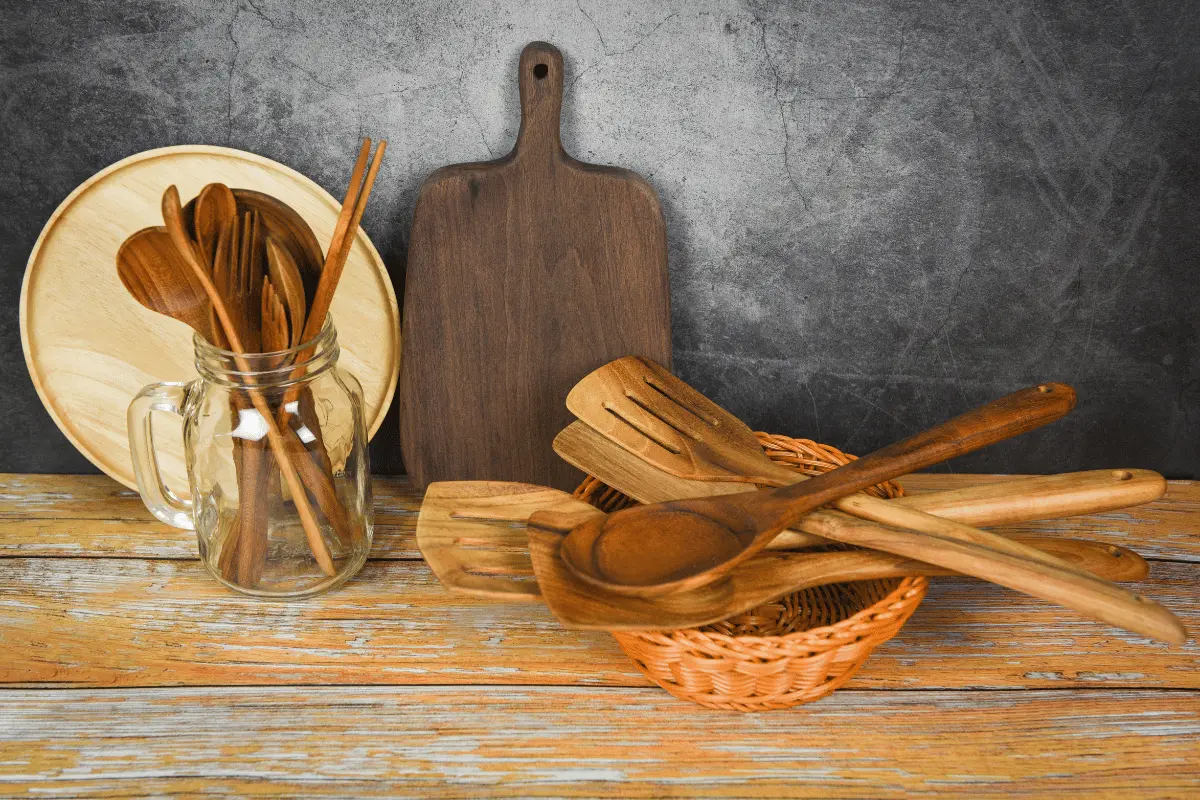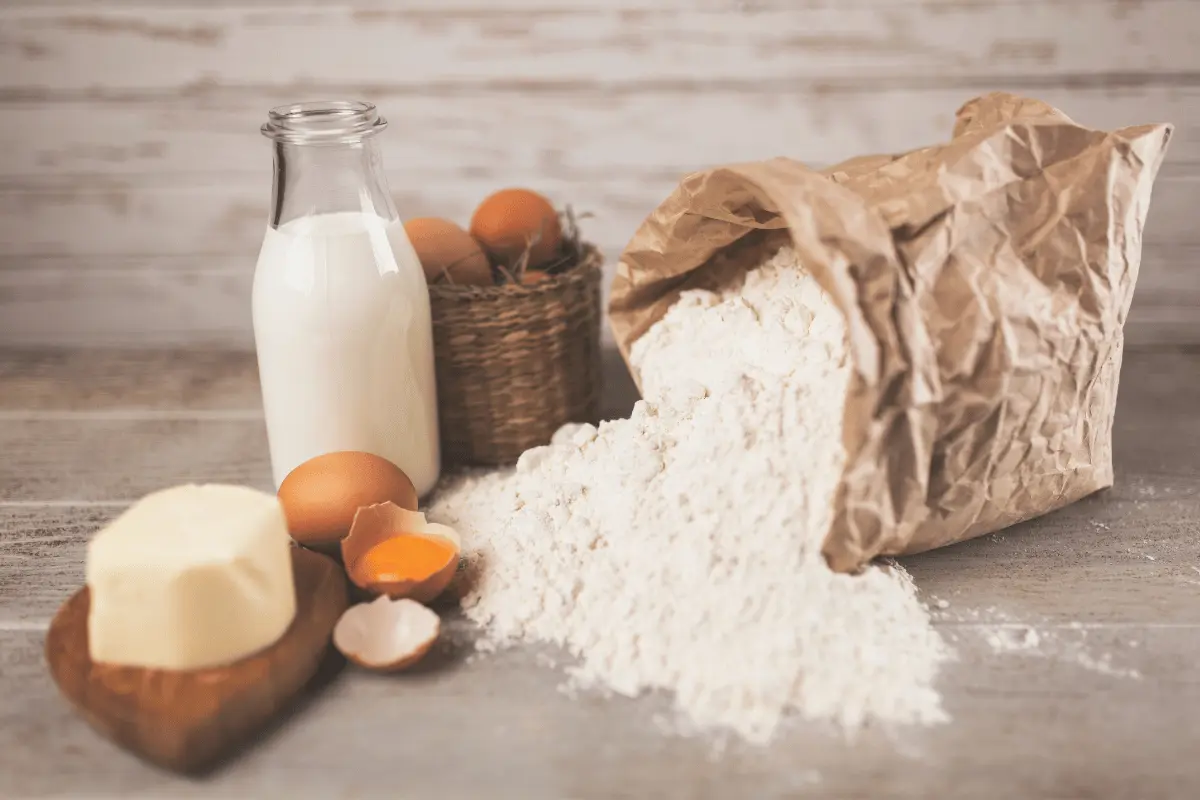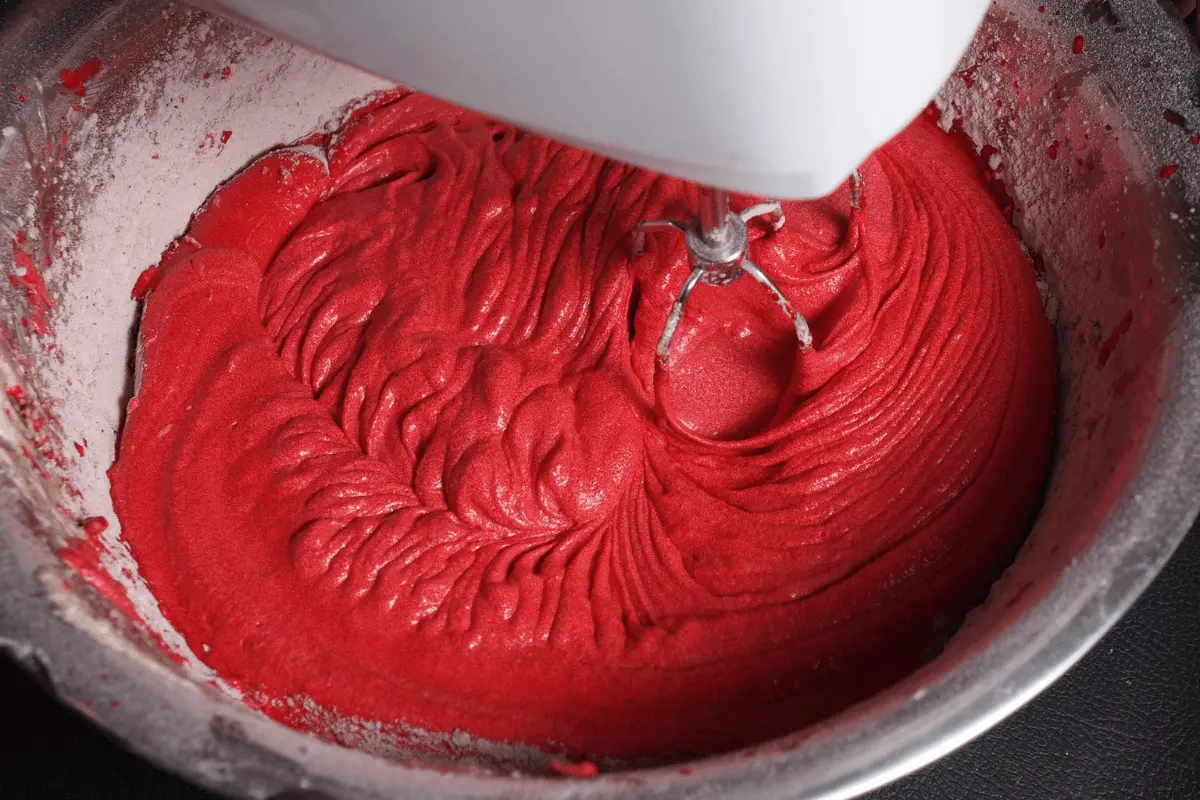In the vibrant world of desserts, one cake stands out with its eye-catching hue and unique flavor profile: Red Velvet Cake. This article delves deep into the heart of this beloved treat, unraveling its mysteries from its rich history to its distinctive taste and beyond. We’ll explore whether Red Velvet Cake is merely a chocolate cake in disguise, the secrets behind its iconic color, and the nuances that make it a staple at celebrations. Alongside, we’ll share baking tips, address common FAQs, and even touch on health considerations, ensuring you have everything you need to appreciate and perhaps bake your own Red Velvet Cake. So, let’s slice into this culinary delight, one layer at a time, starting with its intriguing origins and what exactly makes it so special.
Introduction to Red Velvet Cake
What is Red Velvet Cake?
At first glance, Red Velvet Cake captivates with its striking red color, but it’s the taste and texture that truly make it unforgettable. A Southern American gem, this cake combines the mild flavors of cocoa with the acidity of buttermilk and vinegar, all under a creamy cream cheese frosting. It’s a symphony of flavors that dances on the palate, offering a tangy yet sweet experience unlike any other.
Brief History and Origin
The journey of Red Velvet Cake began in the Victorian era, long before it wore its famous red coat. Initially, it was a simple gesture of adding vinegar to soften the cake’s texture, a necessity in times when cake flour was a luxury. The natural reaction between cocoa and acidic ingredients like buttermilk gave the cake a subtle reddish hue, a quaint precursor to the vibrant dessert we adore today.
However, it wasn’t until the 20th century that Red Velvet Cake truly took on its current identity. The introduction of food coloring, and later, beet juice, during times of war and rationing, transformed this dessert into the red marvel we know. Companies like Adams Extract further popularized the cake by promoting their red food dyes, sealing the fate of Red Velvet Cake as a colorful and festive choice for any occasion.
So, is Red Velvet Cake just a chocolate cake with a dash of color? Far from it. Its unique combination of ingredients, the delicate balance of cocoa, buttermilk, and vinegar, not to mention the iconic cream cheese frosting, elevate it beyond a mere chocolate cake. It’s a culinary masterpiece that stands in a league of its own, cherished for its flavor, texture, and the joy it brings to every celebration.
As we peel back the layers of this delectable cake, we’ll discover not just the secrets of its preparation but also the cultural significance that makes it much more than just another dessert. It’s a story of innovation, tradition, and a whole lot of love, baked into every slice of Red Velvet Cake.

Understanding the Flavor Profile
What Flavor Is Red Velvet Cake?
Diving into the essence of Red Velvet Cake, we uncover a flavor that’s as complex as it is delightful. It’s not just the eye-catching red that makes it a favorite; the taste is where it truly shines. Imagine a cake that whispers the taste of cocoa, yet sings with the tanginess of buttermilk and vinegar, all while being sweetly embraced by a velvety cream cheese frosting. This is the magic of Red Velvet Cake: a flavor that balances richness and tanginess in a dance of culinary excellence.
Is Red Velvet Cake Chocolate?
Now, onto the burning question: Is Red Velvet Cake merely a chocolate cake with a red hue? Let’s set the record straight. While both cakes share cocoa as a common ingredient, the comparison ends there. Red Velvet Cake boasts a unique flavor profile that sets it apart from its chocolate counterparts. The addition of buttermilk and vinegar not only contributes to its softer texture but also introduces a tangy flavor that you won’t find in traditional chocolate cakes.
Moreover, the amount of cocoa in Red Velvet Cake is carefully measured to ensure it complements rather than overpowers. This subtle use of cocoa creates a gentle backdrop for the other flavors to shine, particularly the tanginess that’s so characteristic of this cake. It’s this delicate balance that defines Red Velvet Cake, making it distinct from a straightforward chocolate cake. In essence, Red Velvet Cake stands out in the dessert world not just for its striking appearance but for its complex flavor profile. It’s a testament to the art of baking, where every ingredient plays a pivotal role in creating a cake that’s as memorable for its taste as it is for its color. So, next time you enjoy a slice of Red Velvet Cake, savor the unique blend of flavors that make it a truly special treat.

Ingredients and Baking Process
Key Ingredients That Define Red Velvet Cake
The magic of Red Velvet Cake lies not just in its vibrant appearance but in the symphony of ingredients that come together to create its unique flavor and texture. At the heart of this culinary masterpiece are a few key components that set it apart from other cakes.
Firstly, cocoa powder plays a pivotal role, providing a subtle chocolate undertone that’s unmistakable yet not overpowering. The type and amount of cocoa are crucial; too much, and you risk overshadowing the cake’s other flavors, too little, and you lose the essence of what makes it Red Velvet.
Buttermilk and vinegar are the unsung heroes of Red Velvet Cake, introducing a tangy complexity that balances the sweetness of the cake and frosting. This dynamic duo not only contributes to the flavor but also reacts with the baking soda to give the cake its tender, fluffy texture.
What Makes Red Velvet Cake Red?
Traditionally, the red hue of Red Velvet Cake came from a natural reaction between the cocoa powder and acidic ingredients like buttermilk and vinegar. However, to achieve the bold, vibrant red that’s become synonymous with Red Velvet Cake today, food coloring is often used. Whether it’s liquid, gel, or natural alternatives like beet powder, the choice of coloring can significantly impact the cake’s appearance.
How to Make A Red Velvet Cake – Tips and Secrets
Baking the perfect Red Velvet Cake is an art form, requiring precision and a few tricks of the trade. Starting with the dry ingredients, sift together the cake flour and cocoa powder to ensure a smooth, lump-free batter. The secret to that velvety texture? A combination of unsalted butter and oil, which provides moisture and richness without weighing down the cake.
Buttermilk is non-negotiable for that authentic Red Velvet flavor and texture. Its acidity not only contributes to the cake’s rise but also enhances its tender crumb. And when it comes to coloring, opting for gel food coloring can give you that deep red shade without altering the cake’s taste or consistency.
For those seeking a more natural approach, beet powder offers a subtle, chemical-free color option, though the final hue may be more muted. Regardless of your choice, the key to a successful Red Velvet Cake lies in the careful balance of ingredients and the love poured into every step of the baking process.
In crafting a Red Velvet Cake, every ingredient and technique comes together to create something truly special. From the cocoa that whispers hints of chocolate to the buttermilk and vinegar that lend their tangy notes, each component plays a crucial role. And with a few baker’s secrets up your sleeve, you’re well on your way to baking a Red Velvet Cake that’s as delightful to eat as it is to behold.
Creating the perfect Red Velvet Cake
Red Velvet Cake in Culinary Culture
Cultural Significance and Occasions
Red Velvet Cake isn’t just a treat; it’s a cultural icon that has woven its way into the fabric of many celebrations and traditions. Its origins in the American South have imbued it with a sense of nostalgia and warmth, making it a staple at gatherings where comfort and joy are on the menu. From birthdays to weddings, Red Velvet Cake brings a touch of elegance and a burst of flavor that elevates any occasion.
This cake’s versatility is truly remarkable. During the holiday season, its vibrant red color makes it a festive favorite, adding a splash of cheer to Christmas and Valentine’s Day tables. But its appeal isn’t limited to specific times of the year. Red Velvet Cake has a way of making any day feel like a celebration, whether it’s marking an anniversary, a job promotion, or simply the joy of being together with loved ones.
Celebrations and Traditions Involving Red Velvet Cake
In many ways, Red Velvet Cake has become synonymous with celebration itself. Its striking appearance and luxurious taste make it a popular choice for wedding cakes, where it symbolizes love and passion. But it’s not just the big moments that Red Velvet Cake enhances; it’s also there for the small, intimate gatherings where its comforting presence is just as appreciated.
The tradition of serving Red Velvet Cake at important milestones has only grown stronger over time. It’s a cake that tells a story, one of heritage, family, and the simple pleasures of life. Whether it’s a grand wedding or a cozy family dinner, Red Velvet Cake has a way of bringing people together, making every bite a shared experience that lingers in the memory long after the last crumb has been savored.
In the world of desserts, Red Velvet Cake stands out not just for its taste but for its ability to capture the essence of celebration. It’s a testament to the power of food to evoke emotion, to commemorate the past, and to inspire joy in the present. As we continue to explore the layers of this beloved cake, it’s clear that its place in culinary culture is as rich and vibrant as its color, a symbol of the moments that matter most in our lives.
Nutritional Information and Variations
Health Considerations
While Red Velvet Cake is undeniably a treat for the senses, it’s also worth considering its place within a balanced diet. Like many desserts, it comes with its share of calories, primarily from sugar and fat. However, this doesn’t mean it can’t be enjoyed in moderation. Being mindful of portion sizes allows you to savor this delightful cake without overindulging.
For those with specific dietary needs or preferences, the good news is that Red Velvet Cake can be adapted to suit a range of nutritional considerations. Gluten-free flour blends offer a way for those with gluten sensitivities to enjoy this classic dessert, while plant-based substitutes for buttermilk, butter, and cream cheese frosting make vegan versions of Red Velvet Cake just as indulgent as the original.
Variations of classic red velvet
The adaptability of Red Velvet Cake doesn’t stop at dietary modifications. This cake’s basic recipe is a canvas for creativity, allowing bakers to infuse it with their personal touch. Some variations include adding espresso or coffee to deepen the cocoa flavor, or incorporating orange zest for a citrusy twist that complements the cake’s tanginess.
For those looking to reduce the sugar content, natural sweeteners like maple syrup or honey can be used in both the cake and frosting, offering a healthier alternative without compromising on taste. Additionally, beet juice can serve as a natural food coloring, enhancing the cake’s nutritional profile while maintaining its signature red hue.
The beauty of Red Velvet Cake lies in its versatility. Whether you’re seeking a gluten-free treat, a vegan delight, or simply a healthier version of this beloved dessert, there’s a Red Velvet Cake variation that meets your needs. By experimenting with different ingredients and flavors, you can enjoy this classic cake in a way that fits your lifestyle, making every slice as nourishing as it is delicious.
As we delve into the world of Red Velvat Cake, it becomes clear that its appeal goes beyond its stunning appearance and rich flavor. This cake is a celebration of diversity and adaptability, capable of bringing joy to everyone, regardless of dietary preferences or restrictions. In the end, Red Velvet Cake is more than just a dessert; it’s a symbol of inclusivity, a reminder that there’s a place at the table for all of us.
Conclusion
In wrapping up our journey into the heart of the Red Velvet Cake saga, we’ve delved into every aspect of this beloved dessert. From its storied origins and distinctive taste to considerations for health and the myriad ways it can be customized, this cake stands out as more than mere confectionery. It’s a beacon of festivity, a medium for artistic expression, and a celebration of the baking craft.
Both seasoned pastry chefs and baking novices find Red Velvet Cake a delightful challenge. It promises joy in creation and tasting. Its versatility suits any event or dietary need, inviting bakers to discover its unique charm.
This exploration sheds light on the dessert’s culinary appeal and its role in our celebrations. It fosters connection, festivity, and happiness.
As we conclude our journey with this iconic dessert, remember, baking is more than recipes. It’s about passion, creativity, and a touch of magic. Next time you wish to bake something special, consider this classic. It’s sure to bring smiles and warmth, reminding us that life’s best moments are shared.

